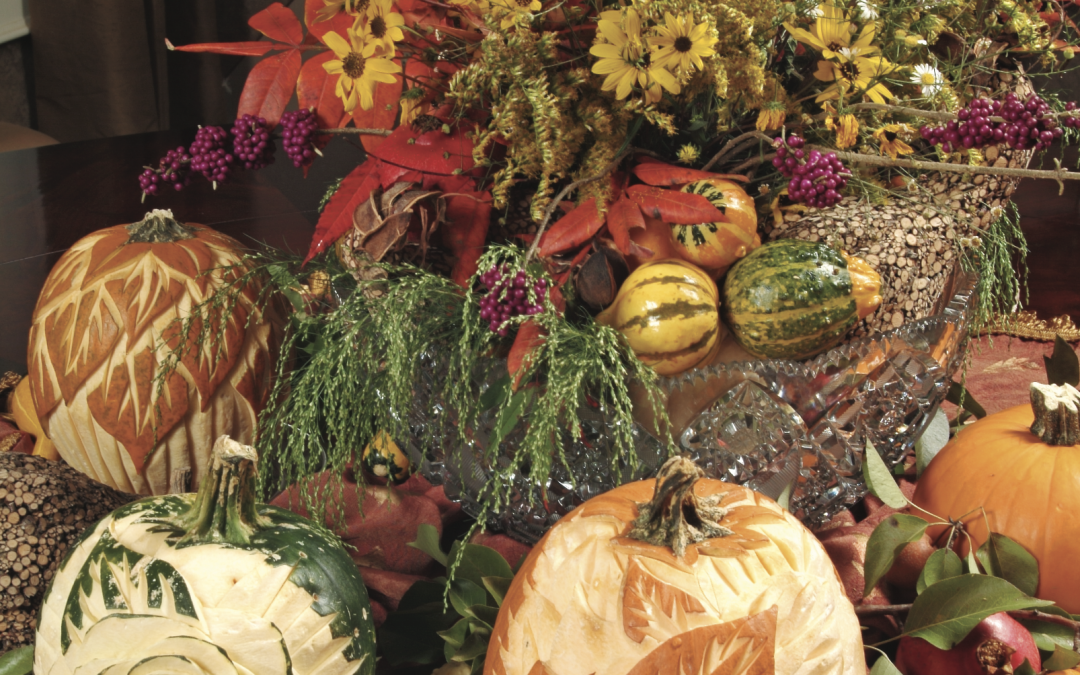Fall is a great time to take nature walk in the woods with a basket to collect a bounty for the table. The roadside is filled with a great variety of textures, colors, shapes, and sizes.
Jewel-tone leaves and branches and all sort of cones, fruits, and berries are everywhere and changing daily. Tall grasses and sort cattails with thin, tapering leaves gathered together add height and interest to any arrangement, giving an almost architectural quality. October daises with golden leaves bring out the colors of all the other foliage. Goldenrod serves as a feathery filler. Don’t forget red spider lilies, Queen Ann’s lace, and ageratum. Their colors and textures create a delightful combination. Beautyberries are wonderful additions, with their leaves stripped to reveal just the berries along the graceful branches.
Wild materials need conditioning before using in arrangements and work better when placed directly in water than in floral foam. To condition, strip the foliage that will be underwater, and place the material in a cool place in room-temperature water for about 12 hours or overnight. Beautiful pumpkins, gourds, vegetable, and dried materials add to the fall abundance, so place them with the arrangement, and create a natural fall tables cape for everyone to enjoy.
David Leathers, a food stylist from Tupelo, gilds the lily (or shall we say pumpkin) even further with his exquisite carved pumpkins. He turns simple pumpkins int o works one art with the use of light and dark colors, creating fall leaves, grapes, and flowers on the surface with an X-acto knife and a pairing knife. David shares how to create a fall leaf pumpkin with a little time and a few easy steps:
• Choose a simple leaf design or a real leaf, and sketch the shape on tracing paper to make a pattern template.
• Cut out the leaf pattern, leaving a ¼-inch edge all around each leaf to be carved.
• Staple the template directly to the surface of the pumpkin. (The tiny holes made by the staples will be invisible when you finish.)
• Trace the template with the X-acto knife, cutting through the tracing paper.
• Remove the template, and make surface cuts (such a veins or details) with the paring knife.





